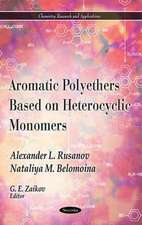Kinetics of Binary Metal Hydride Decomposition
Autor Igor E Gabis PhD, Ilia A Chernov PhDen Limba Engleză Paperback – 31 aug 2017
Preț: 580.76 lei
Preț vechi: 746.05 lei
-22% Nou
Puncte Express: 871
Preț estimativ în valută:
111.13€ • 116.34$ • 91.95£
111.13€ • 116.34$ • 91.95£
Carte disponibilă
Livrare economică 17-31 martie
Preluare comenzi: 021 569.72.76
Specificații
ISBN-13: 9781536119879
ISBN-10: 1536119873
Pagini: 95
Dimensiuni: 155 x 230 x 10 mm
Greutate: 0.19 kg
Editura: Nova Science Publishers Inc
Colecția Nova Science Publishers Inc
ISBN-10: 1536119873
Pagini: 95
Dimensiuni: 155 x 230 x 10 mm
Greutate: 0.19 kg
Editura: Nova Science Publishers Inc
Colecția Nova Science Publishers Inc
Cuprins
Introduction; Experimental Methods & Samples; Mathematical Models; Factors That Influence the Kinetics of Dehydriding; Hydrides of Magnesium & Aluminium & Activation of Dehydriding; Conclusion; References; Index.















